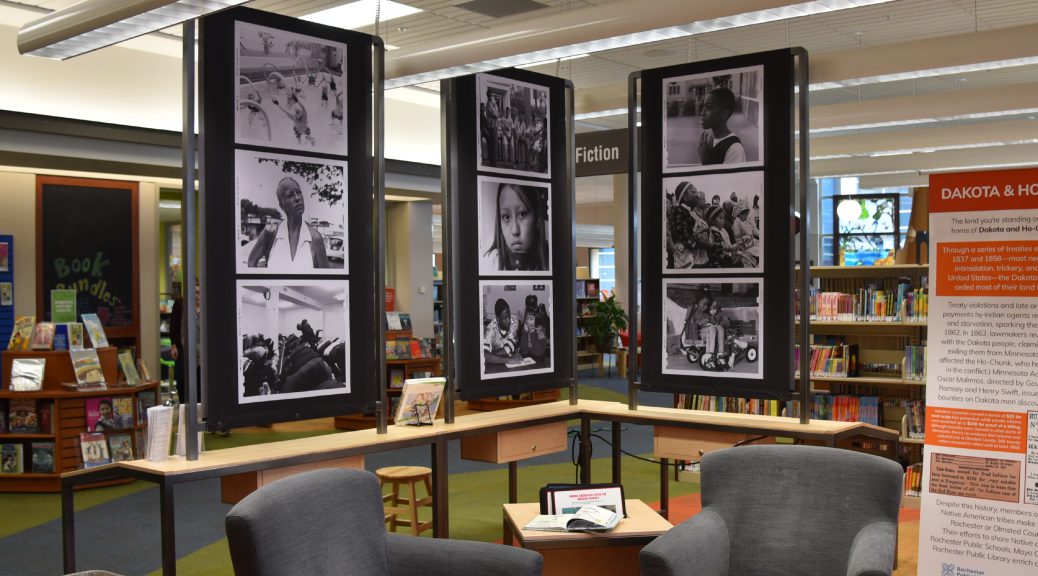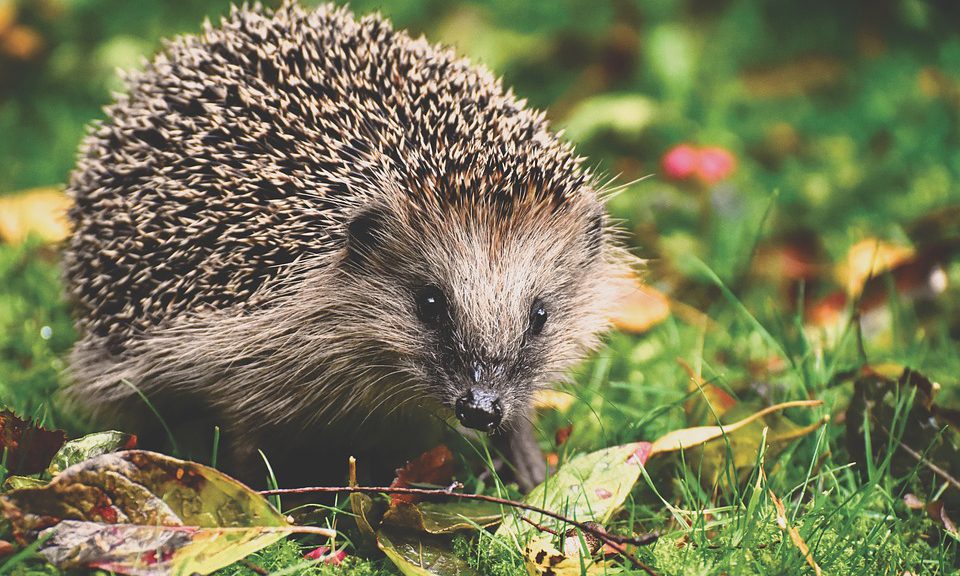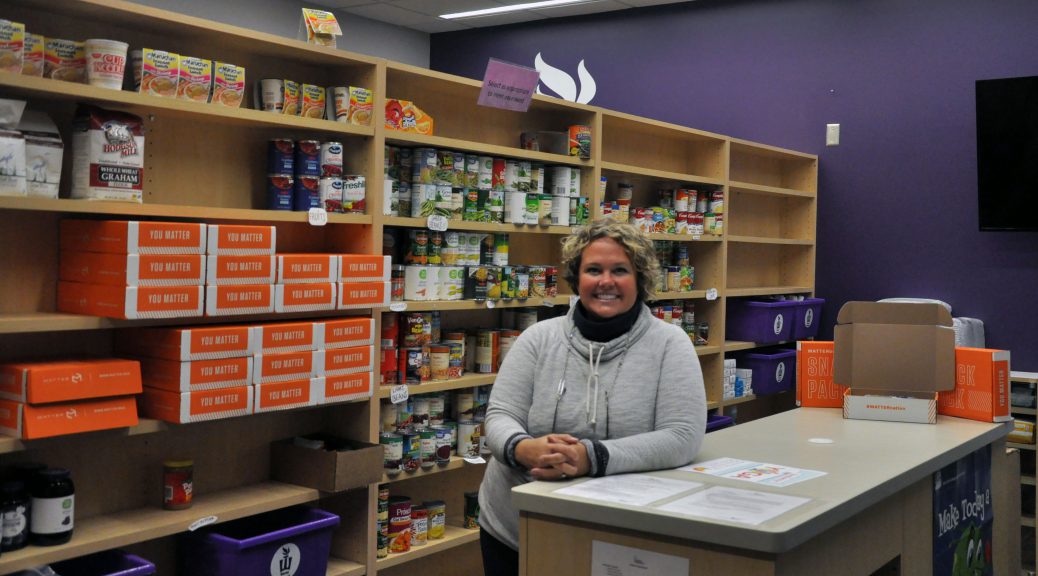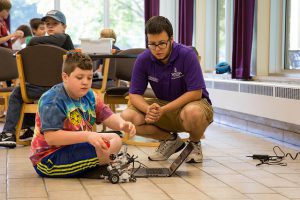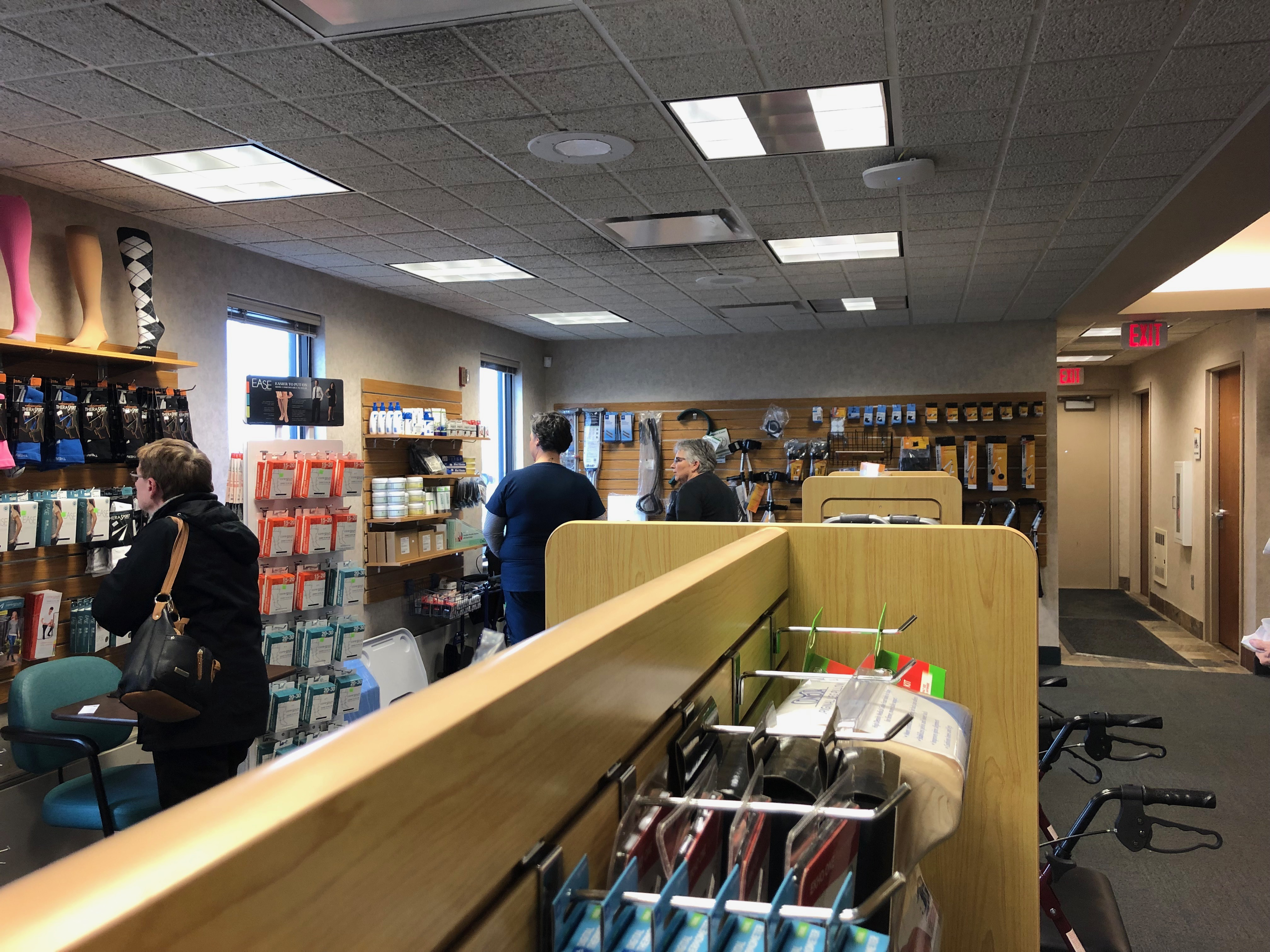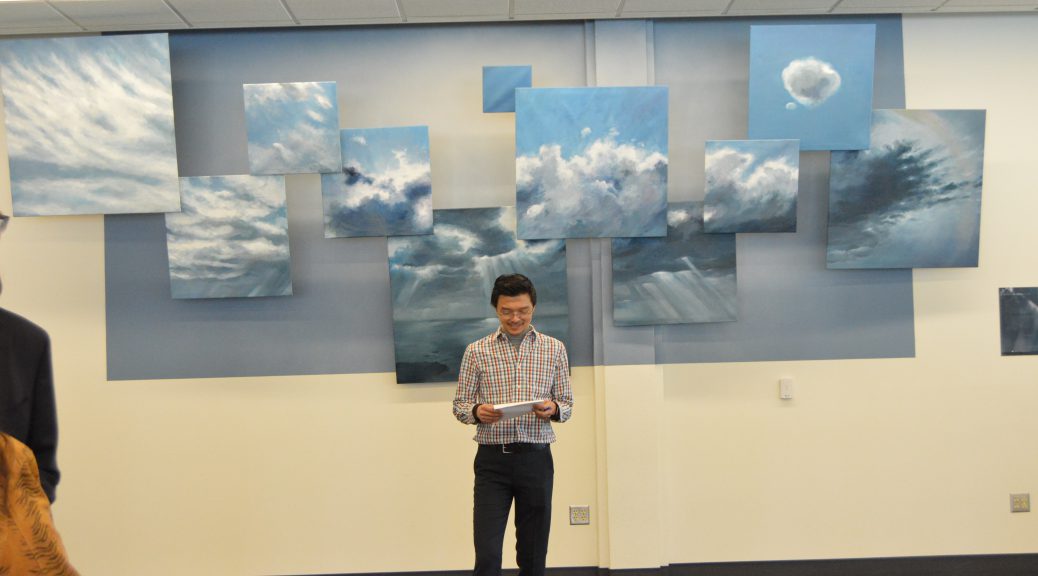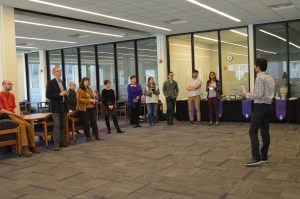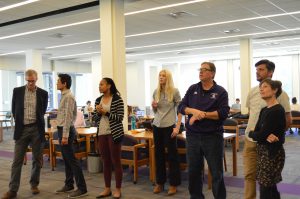By Erin Jones
Nothing quite resembles the bond between a person and their dog.
Or the bond between Winona State University junior, Violet De Stefano, and her emotional support hedgehog, Phillip.
De Stefano, public health major, and Lynda Brzezinski, who has been a counselor at Winona State since 2000, have experienced firsthand the positive effects that pets have on people.
De Stefano sees this positive impact on herself with the help of her quill-covered companion.
For Brzezinski, the impact is seen on the faces of Winona State students, faculty and staff who come to visit Winston and Aiden, the university’s on-staff therapy dogs.
“Winston is a very intuitive dog,” Brzezinski said. “There will be times when I have a student crying in my office where he will get out of his bed and just go sit calmly next to the student. Very amazing.”
Brzezinski added that despite Aiden’s being new to the university, he has done an exceptional job with the students.
“Aiden is a cutie who loves to snuggle. This was his first semester doing ‘Afternoons with Aiden,’ and I think students had a lot of fun with him,” Brzezinski said.
But dogs are not the only pets who love to cuddle.
De Stefano, who has borderline personality disorder, said Phillip loves to snuggle her, especially when she feels alone or anxious.
“One of the things with my case for borderline personality disorder is I struggle with abandonment. I have a really hard time when it comes to people leaving me in my life, whether it’s perceived leaving or them actually leaving me, so it’s really good to have Phillip around because he is an animal that is always there,” De Stefano said. “So if I’m feeling lonely or I’m worried, I can pick him up and it provides that calm space where I can watch him run around and he’s super cuddly and adorable.”
And though the positive effects of having pets is apparent in these cases, both De Stefano and Brzezinski said there was still a process to getting their pets allowed on Winona State grounds.
Brzezinski said that her process with Winston started when he was a puppy going through obedience classes at Family Dog Center in La Crosse, Wisconsin.
“[Family Dog Center] offered the therapy dog class and evaluation,” Brzezinski said. “Winston loves people and he is smart, so he passed the test with flying colors and was registered as a therapy dog at the age of 1 [the minimum age].”
Brzezinski added that once Winston passed his tests, she continued training in animal-assisted therapy and animal-assisted activities and cooperated with campus legal services so Winston would be permitted to work in counseling services.
“I had to do research, get letters of support and make a formal proposal to be allowed to have therapy dogs on campus,” Brzezinski said.
With Aiden, Brzezinski said, the training process was longer, as he failed his first certification test and needed time to “grow up.”
According to Brzezinski, working intelligence levels are different in all dogs, which helped explain Aiden’s need for extra training.
“Winston is an Australian cattle dog/rat terrier mix. Heelers have 95 percent working intelligence and can learn a command in five or fewer times,” Brzezinski said. “Aiden is a pug/boxer mix and they have something like 30 percent working intelligence. It can take a dog like Aiden 30-50 times to learn something, but most dogs can learn if given enough time and patience.”
Though both dogs are certified now, the process hasn’t ended. Brzezinski said training for therapy dogs never ends, as the training must continually be reinforced.
Brzezinski added that for Winston and Aiden to remain on-staff, she must follow strict rules.
“I have a lot of guidelines I need to follow – the dogs must be bathed and groomed, nails trimmed, I need to vacuum, there needs to be signage, I hold malpractice insurance that covers the dogs, they always need to be on a leash, etc.,” Brzezinski said.
De Stefano had to follow a similar process when getting Phillip approved to live on campus with her. Phillip did not have to go through training to become an emotional support animal.
De Stefano’s process started in April 2018, when she was diagnosed with borderline personality disorder.
“[Borderline personality disorder] is complicated. It’s kind of like bipolar disorder, but much quicker. So I will go through periods of mania and depression and it can be within hours of each other,” De Stefano said. “It’s stressful because when you wake up, you’re not sure if you’re going to be manic or you’re going to be depressed or you’re going to have no motivation or all the motivation in the world.”
De Stefano said she had been having symptoms of the disorder since eighth grade but wasn’t certain until she consulted a professional.
“In April I was dating a guy and he and I had just broken up, and I panicked,” De Stefano said. “It was my first bout of extreme suicidal ideation, which was pretty scary. I ended up going to the hospital at Winona Health and I admitted myself into the Department of Behavioral Medicine because I was like, ‘OK, we gotta get something figured out here.’”
After receiving her diagnosis, a social worker at the hospital referred her to a local therapist, with whom she could talk about what she was going through.
This was where she first considered the possibility of getting an emotional support animal, specifically; a hedgehog.
De Stefano said that with her borderline personality disorder, one of her impulsive behaviors is to self-harm, especially when she fears someone is leaving her.
Because Phillip’s quills are sharp, De Stefano said, when holding him she feels she receives the same stimulus as self-harm but without actually hurting herself.
“I know it’s interesting. It’s not something that people normally think about and when I talked to my therapist and was like, ‘Hey, this is what I’m thinking,’ they were like, ‘Oh, that’s interesting, I wouldn’t have even thought of that,’” De Stefano said.
Since De Stefano adopted Phillip last June, he has helped her cope with her borderline personality disorder but getting him into the dorms wasn’t an easy feat.
De Stefano first had to obtain a statement letter from her therapist, listing her qualifications to have the animal and recommending it.
She then had to do an intake meeting with Access Services so they could determine whether she would be able to support the animal and if it would be a disruption to other students.
Eventually, De Stefano did get Phillip approved to live in the dorms, but that wasn’t the hardest part for her.
“[Having Phillip] wasn’t necessarily a problem, but it was. I had to acknowledge what I was struggling with and what I was going through because I had to have that conversation pretty constantly of ‘Oh, I have an emotional support hedgehog. The reason I have it is because I struggle with X, Y and Z,’” De Stefano said.
Despite these uncomfortable conversations, De Stefano said jumping through all the hoops to get Phillip has been worthwhile.
“He’s also taught me a lot of patience and compassion because hedgehogs are so time-consuming. I have to spend time with him every day to get him to warm up to me and to be comfortable and cute like the little Instagram hedgehogs that I follow,” De Stefano said. “You have to spend time with them and eventually, I’ve noticed that his quills will lay down when I pick him up. It’s taking a lot of time, but it’s incredible.”
So as it turns out, De Stefano helps Phillip as much as he helps her.
And, as it turns out in Brzezinski’s case too, Winston and Aiden do more than just comfort the students, faculty and staff of Winona State.
“We are the first university in the Minnesota State system to have therapy dogs on ‘staff,’ which I’m very proud about,” Brzezinski said. “There is often a lot of negative stigma around mental health and counseling, but I think the dogs help break down barriers and give [Counseling Services] a more positive image at times.”
Erin Jones is the former copy editor for Winona State University’s student-run newspaper, The Winonan. She expects to graduate in May 2019. Before being copy editor, she was one of The Winonan’s news reporters. Jones is majoring in mass communication-journalism and minoring in criminal justice. After graduation, she hopes to find a career in which she can use both her major and minor. She is also interested in being a feature writer or an editor for a magazine.
